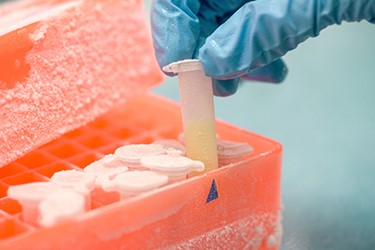Keeping It Cool: Protecting Cryopreserved Biological Samples From Degradation

Cryopreservation requires a slow cooling process to reach temperatures at or near the temperature of liquid nitrogen (−196°C). This method is standard practice in preserving biological samples. In their recent review, Woods et al. (2016) examined cryobiology applications in cryopreservation to identify new solutions to integrate into mainstream cell therapy.1
Optimal cryostorage begins with the individual sample and its unique composition, which affects the cooling rate. Samples cooled too quickly are at risk of temperature shock, while keeping samples in ultra-low temperature storage for too long can lead to chilling injury.
Degraded samples are common and certainly problematic for investigators. Other transient events are a common cause of degradation. Any fluctuations in temperature during sample storage or transfer can take a toll on samples with each freeze-thaw cycle. Along with this, suboptimal warming procedures also affect sample integrity.
Read more about common causes of degradation as well as agents and systems available to protect against freeze–thaw.
Get unlimited access to:
Enter your credentials below to log in. Not yet a member of Clinical Leader? Subscribe today.
